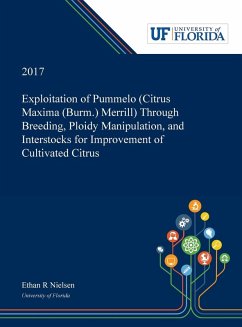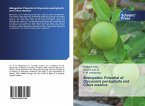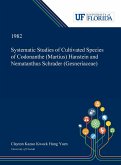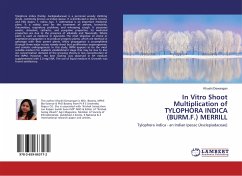Abstract: Citrus in Florida is in desperate need of new and improved cultivars in light of recent disease epidemics which have ravaged the citrus industry and threaten all citrus producing regions of the world. The primary diseases at present are Huanglongbing (HLB) and citrus canker. Most cultivated varieties of citrus are hybrids derived from a few ancestral species. Disease tolerance found in the ancestors may be used to develop synthetic new hybrids that approximate the genetic make-up of modern cultivated forms. This study focuses on selecting and utilizing pummelo (Citrus maxima Burm. Merrill) cultivars and accessions that are exhibiting tolerance to citrus canker (Xanthomonas citri var. citri), with additional consideration of tolerance to Huanglongbing (presumed causal agent Candidatus Liberibactor asiaticus). These pummelo selections will be used to breed new synthetic grapefruit hybrids to replace current susceptible varieties while maintaining the appearance and flavor of consumer-accepted forms. New hybrids will take advantage of parthenocarpy and triploidy to produce seedless fruits. One of the symptoms of HLB is the loss of feeder roots contributing to the decreased nutrient uptake and decline of the tree's health. Discovery of CLas infected trees exhibiting healthy and expansive root systems on standard Swingle rootstocks after being infected for several years led to the question of whether the scion or an interstock could remediate the effects of HLB. To explore this idea, HLB infected Valencia sweet oranges were grafted onto putative HLB tolerant or resistant pummelo and hybrid interstocks, which were grafted onto standard rootstocks in order to determine if their putative resistance to HLB could be conferred to the scion and rootstock. Hybrids using Citropsis gilletiana and Microcitrus species are also discussed as sources of disease resistance or tolerance. Dissertation Discovery Company and University of Florida are dedicated to making scholarly works more discoverable and accessible throughout the world. This dissertation, "Exploitation of Pummelo (Citrus Maxima (Burm.) Merrill) Through Breeding, Ploidy Manipulation, and Interstocks for Improvement of Cultivated Citrus" by Ethan R Nielsen, was obtained from University of Florida and is being sold with permission from the author. A digital copy of this work may also be found in the university's institutional repository, IR@UF. The content of this dissertation has not been altered in any way. We have altered the formatting in order to facilitate the ease of printing and reading of the dissertation.








